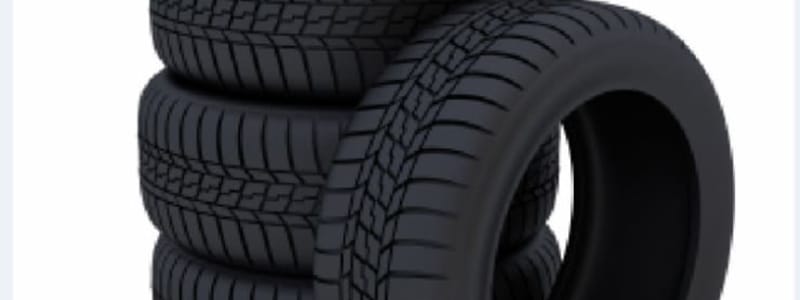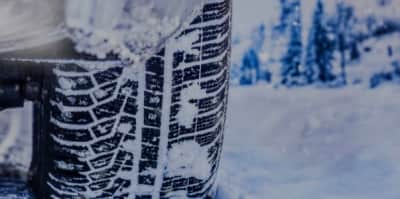
Before deciding which new tyres to get, it is very useful to know which type are already fitted to your car. Your mechanic should be a good source of information about which tyres will be best for you, but which tyres you need will depend entirely on where and when you drive.
There are lots of different types of tyre which are perfectly suited for different purposes so you will have to read the descriptions and see which one most applies to you and your driving habits.
How are tyres marked?
Tyres are marked with ‘service type indicators’, which appear as a series of between 8 and 10 letters and numbers. They may look very complicated to the untrained eye but you only need a couple of pieces of information to be able to correctly identify any tyres that you already have.
If the code starts with a ‘p’ this means that tyres are ‘p-metric’ size which are designed for passenger vehicles (cars, minivans, light pickup trucks). If there isn’t a letter at the beginning of the code then this will mean that the tyres are ‘metric’ size. This size of tyre is mostly used on European cars.
The letter T before a tyre code means that the tyre was only designed as a temporary spare and that it should only be used until a flat tyre can be replaced or fixed.
LT is the code used for tyres for vehicles which are going to be carrying heavy loads or towing other vehicles. If the code begins with ST then it means that the tyre was never designed to be fitted to a car or van but rather should be used on boats or trailers.
Following the letters is a series of numbers. These aren’t as complicated as they seem. The first three numbers represent the width of the tyre in millimetres. The following two numbers (after the / ) represents the tyre’s height from rim to tread, expressed as a percentage of the side width of the tyre.
There will then be another letter following these five numbers. This letter relates to the construction of the tyre. An R will mean that the tyre has a radial construction, D represents a diagonal construction and B means that the tyre has a belted construction. The number following this will be the rim diameter in inches. This will be a number from 8 to 28.
There will then be a space and the combination of three letters and numbers following this will be the service description of the tyre. You will have to look this up in an index or directory to see exactly what yours means. So if you have a tyre marked with P255/50R16 91S it means that it is a tyre suited for passenger vehicles, with a sidewall width of 255mm and a height (from rim to tread) of 50% of 255mm (127.5mm). It was made for a 16-inch wheel.
Get up to offers for new tyres
The tyre types
There are different types of tyre that you should be aware of before deciding which ones to fit to your car. There are summer tyres, which will probably be what you already have fitted, winter tyres, all season tyres and run flat tyres, to name just the most common types.
Winter tyres are often spoken about when the ice and snow hits different parts of the UK at the start of each year, but the reality is that there are very few parts of the UK where they are a real necessity. They are designed to help provide more grip when driving on slippery, icy roads and they improve the breaking performance of the car in wintery conditions. They tend to have a block design on the tread which has wide, deep grooves to help provide more traction and control when driving over ice or snow. If you are going to be going skiing, for example, then winter tyres are an extremely good idea to help you get up those steep winding paths which lead to the resorts. If you are going to be driving on a motorway in the UK in winter, then they probably aren’t that useful.
All season tyres are ones which are suitable for using throughout the whole year. They may not get the best out of your car at all times but they do perform to a decent standard in all conditions and will prevent you from having to change your tyres all the time.
Run flat tyres are the ones fitted to most new cars by the majority of manufacturers. These tyres are extremely helpful if you are not well acquainted with changing a tyre at the side of the road as they will allow you to keep driving for a few miles after having had a puncture. They can’t often be repaired as easily as other types of tyres, so if you do get a puncture then you are likely to be looking at having the whole tyre replaced which would be more expensive, but you do save yourself the hassle of having to fit the spare.
Speed rating
Not all tyres come with a speed rating, but if yours do then all it means is that there is a safe speed limit at which the tyres can perform. Usually, this is 150 mph. Realistically, if you are driving on the roads in the UK then you are not going to be reaching speeds anywhere near this high, but it is worth checking what the restrictions are on any new tyres you have fitted. Winter tyres often have restrictions more so than normal or summer tyres.
Get up to offers for new tyres
All about Tyres, Tyre change, Winter Tyres and Rims
- Tyres, tyre mounting and wheel change
- New Winter Tyres and Rims
- New Rims or Replacing Your Rims
- What Are 4x4 Tyres?
- What Are Run Flat Tyres?
- Which Are the Best Car Tyre Brands?
- Watch Out with Cheap Part Worn Tyres
- Cheap Tyres Online
- Flat Tyre? - How to Change a Flat Tyre
- Tyre Types and Sizes
- Can I Have Broader Tyres on My Car?
- What is TPMS Tire Pressure Monitoring System
- Eco Friendly Tyres?
- What is Wheel Alignment
- Service for wheel alignment
- What are the Rules for Winter Tyres in the UK?
- How to Tell if Winter Tyre is OK
- Are Your Winter Tyres in Good Shape?
- Save Thousands When You Need New Winter Tyres
- Change Tyre on a Wheel, or Two Sets of Tyres?







